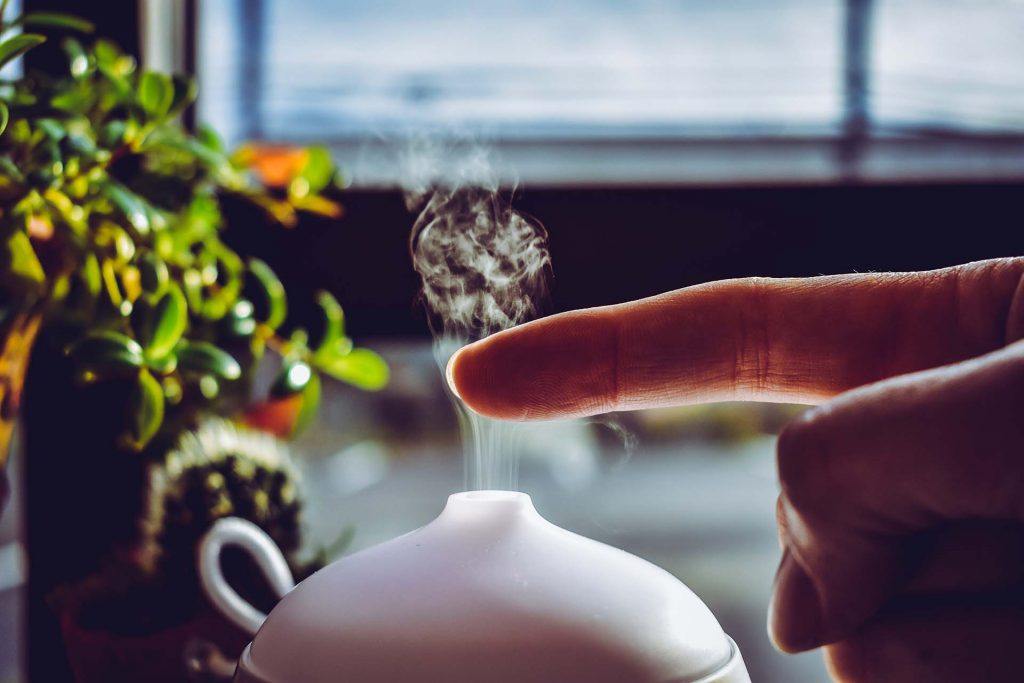One of the best things about essential oils is the incredible scents that they produce! Aromatherapy can be great for use in different rooms of a house or office space. Not only do essential oils hold an aromatherapeutic benefit, but they also have the potential to disinfect the air and reduce mold and other harmful particulates that may be present.
We’ve all seen the cute little color-changing diffusers, which can be great for small spaces. Unfortunately, sometimes, the diffusers we use fall short in large areas.
In this article, we’ll take a deep dive into what diffusers are and how they work as well as share a few diffusers for large spaces with solid ratings. We’ll finish up by answering some frequently asked questions about diffusers so that you will be confident in purchasing an aromatherapy diffuser for your space.
Table of Contents
What is a diffuser?
Diffusers exist as a wide range of items, but their purpose remains consistent. By definition, diffusers are any type of item that exists to diffuse essential oils into a space. Different types of diffusers have different parts, but all serve a similar purpose.
Types of Diffusers
You have probably seen many kinds of products referred to as “diffusers” – from a ceramic pot to reed diffusers to electronic diffusers. They usually employ some force to promote the release of particles of essential oil into the air. Some examples include heat diffusion, which generally uses a small candle or heating element to make the molecules in essential oils. The next example is nebulizing diffusers, which use an atomizer to break down the essential oil into smaller particles, so it diffuses into the air. The last example is ultrasonic diffusers, which use water to mix with the essential oils and create a mist that then disperses into the air.
There are many more varieties of diffusers, some working better than others, but all of which can make essential oil diffusion accessible at almost any price point! The cheapest method of diffusion is called “Tissue Diffusion” and only requires you to wave a tissue with essential oils on it in the air to diffuse the scent!
Components and types of diffusers
As mentioned above, there are many different types of diffusers out there and, thereby, many various parts that make them work. We’ll share the elements of a few of the more common types of diffusers here.
Ultrasonic Diffusers
This type of diffuser is prevalent because not only does it diffuse essential oils, but it also acts as a humidifier. This added moisture in the air is beneficial in arid climates and in the dryness that comes in the winter months. These diffusers usually have a component that vibrates the essential oil molecules into tiny parts that mix with the water added to the diffuser and create a mist that diffuses the healing oils into the room.
You have probably heard of essential oil humidifiers. When you hear this, it likely refers to either an ultrasonic diffuser or an evaporative diffuser. It is particularly useful for colder climates or arid climates because not only is the essential oil being released into the air, but it also adds much-needed humidity to your home.
Ultrasonic diffusers are not to be confused with steam or heat diffusers. They are typically considered to be better and offer more benefits, like being easy to clean and not requiring a lot of power to work.
The biggest cons to ultrasonic diffusers are that they release a lot of moisture into the air, which can dilute the essential oils, so you may not receive the full benefits of the essential oil you are diffusing. The water tanks of ultrasonic diffusers also tend to grow mold and fungus very quickly. Additionally, these types of diffusers are frequently made of plastic, which makes them unsightly and cheap. Lastly, they can easily break down, leak, and emit a very weak scent.
Nebulizing Diffusers
Nebulizing diffusers are widely considered one of the highest quality diffusers that you can purchase because they distribute pure essential oil into the air. Nebulizing diffusers have a small air pump that blows air across a small tube within the diffuser, which creates a powerful vacuum that brings fine particles of essential oil to the top of the container and releases it into the air.
Nebulizing diffusers have a small air pump that blows air across a small tube within the diffuser, which creates a powerful vacuum that brings fine particles of essential oil to the top of the container and releases it into the air.
Nebulizing diffusers are considered to be the best diffusers you can get. Since they diffuse only the essential oil molecules into the air, you are getting the full benefits of aromatherapy with no dilution from water. They also disperse the essential oils more quickly than any other diffuser. These factors make this diffuser top-notch!
The biggest con is also its pro. They are more effective at dispersing the essential oils, but this also means that they can go through your oil collection a bit quicker than an ultrasonic diffuser.
Although most nebulizing diffusers have a knob to control the flow of the air, it is recommended that you set a timer to remind yourself to add more oil if you plan on diffusing all throughout the day. These types of diffusers can also be a lot more aesthetically pleasing than other diffusers. The reason is that they don’t require a bulky tank full of water to work! Instead, they use a small hang-blown glass tubing that is wonderful to look at and experience.
Evaporative Diffusers
As the name of this essential oil diffuser suggests, this type of diffuser works through the evaporation of the essential oils used. These types of diffusers usually feature a pad that the user soaks with essential oil and a fan that blows the scent outward. They may even just be shaped so that the natural currents of air move the essential oil’s scent outward.
You may see essential oil bracelets or diffusers that are made for use in the car – these are all types of evaporative diffusers. There are even evaporative diffusers that are combined with steam or humidifiers to add to the experience. Evaporative diffusers are not always the most effective and can be frustrating to use because the pad must be changed if you wish to use different essential oils. All essential oil diffusers should be cleaned, but some consider changing the pad to be an extra step.
Heat Diffusers
Heat diffusers are more of a passive method of diffusing essential oils as well and usually use a candle or another heat source underneath a small reservoir containing essential oil.
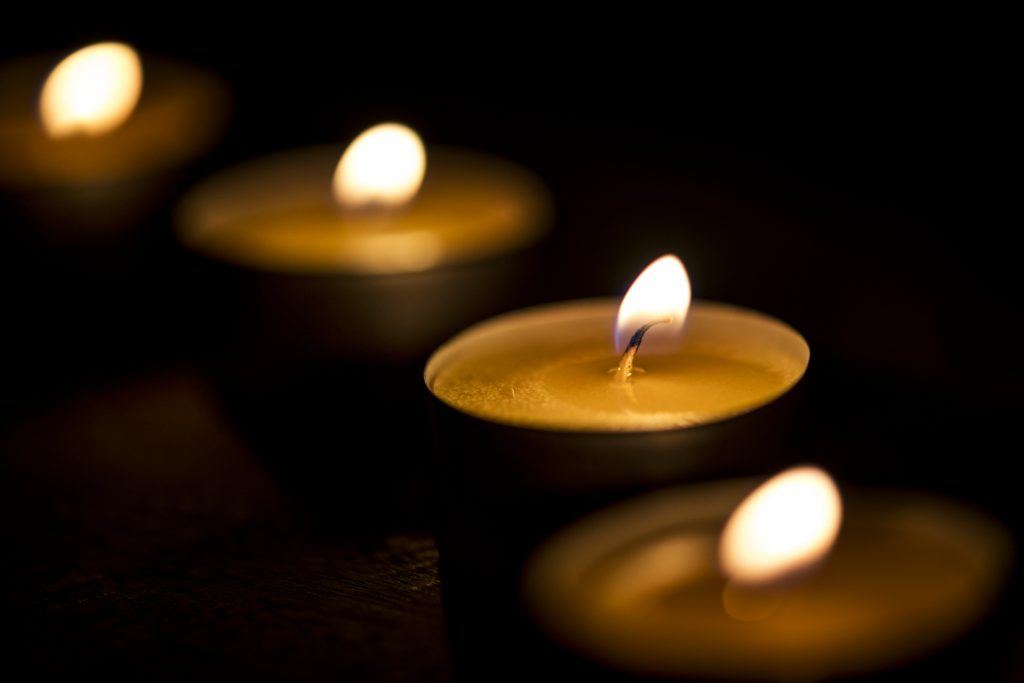
There are also electrical versions of heat diffusers that create heat and induce diffusion. These diffusers work best in smaller spaces.
Aroma Diffusers
An aroma diffuser is something that passively releases the scent of the essential oil. Aroma diffusers work best in small spaces and are a safe option for diffusing that doesn’t include the possibility of causing a fire or an electrical malfunction.
How does a diffuser work?
As you can glean from above, each diffuser has a different method for releasing fragrances from essential oils. What they all have in common is the type of component that holds the oil, the parts that break down oil molecules into smaller molecules, and another part that forces these molecules into the air. While things can change from device to device, these typically remain consistent.
Best Diffusers for Large Spaces
Majestic Pure Essential Oil Diffuser
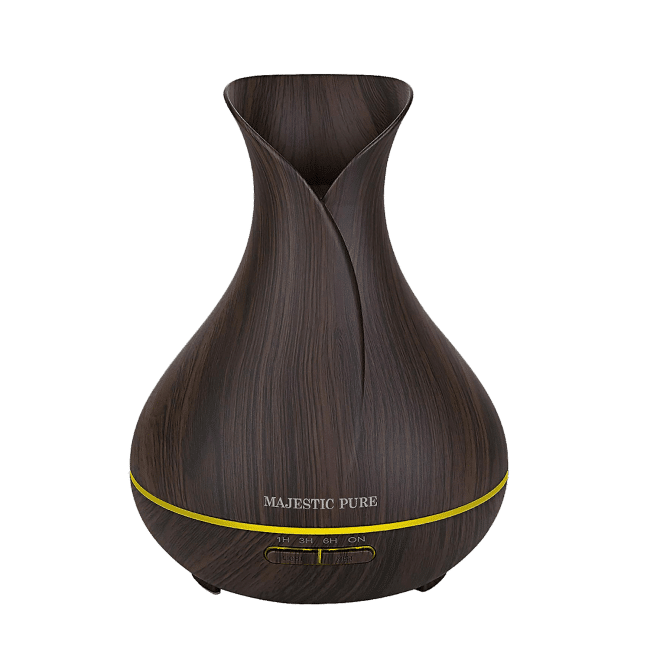
This ultrasonic diffuser claims to have a high output, making it suitable for use in a large space. It has a vast reservoir, and many reviewers mention that the scent it produces is strong enough to cover an entire room.
Opulence – Nebulizing Essential Oil Diffuser
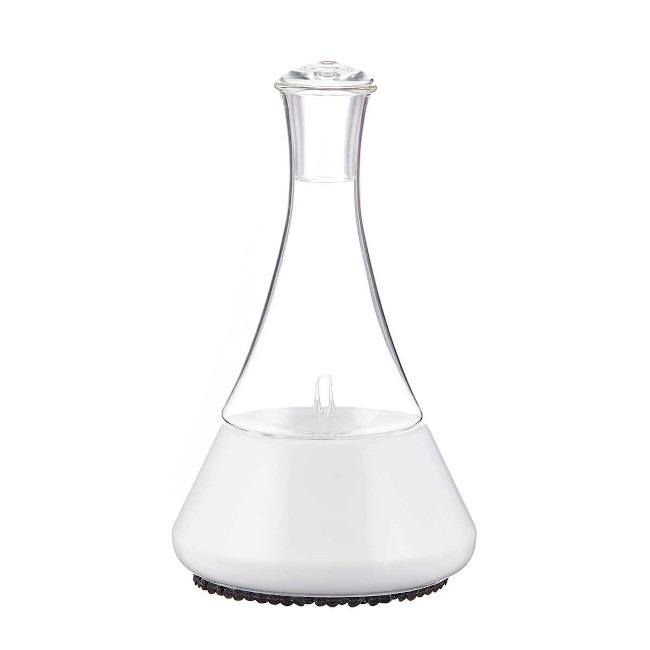
This one is a nebulizing diffuser, meaning that it uses a lot more essential oil than an ultrasonic diffuser, but it claims to cover a space that is 800 square feet. Many reviewers support this pricier diffuser citing its high quality and efficient use. It’s a higher price point than some of the other larger room diffusers, but it is a nebulizer that can mean a higher concentration of your favorite scents.
UPOWER 1000ml Essential Oil Diffuser and Humidifier
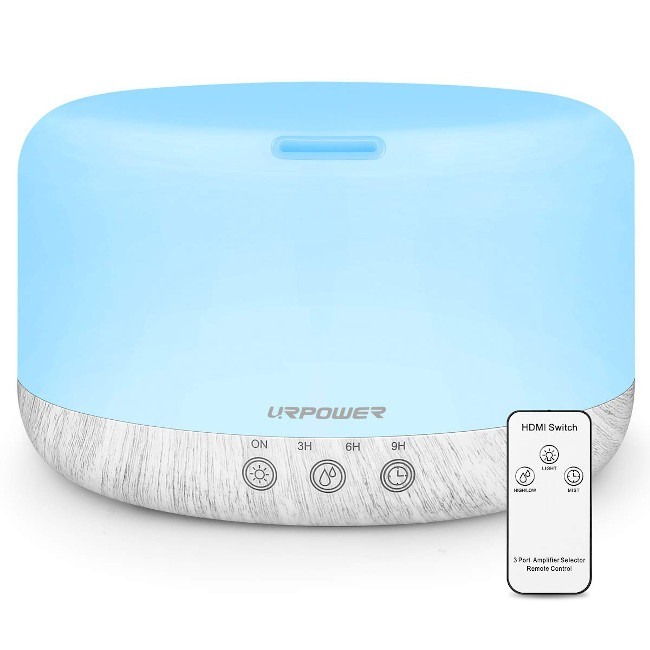
This ultrasonic diffuser is large and in charge with its 1000ml tank and hefty size. It changes colors, which is an excellent and soothing addition to any meditative space. This beast can run quietly for hours and humidify a space if you are in a dry climate.
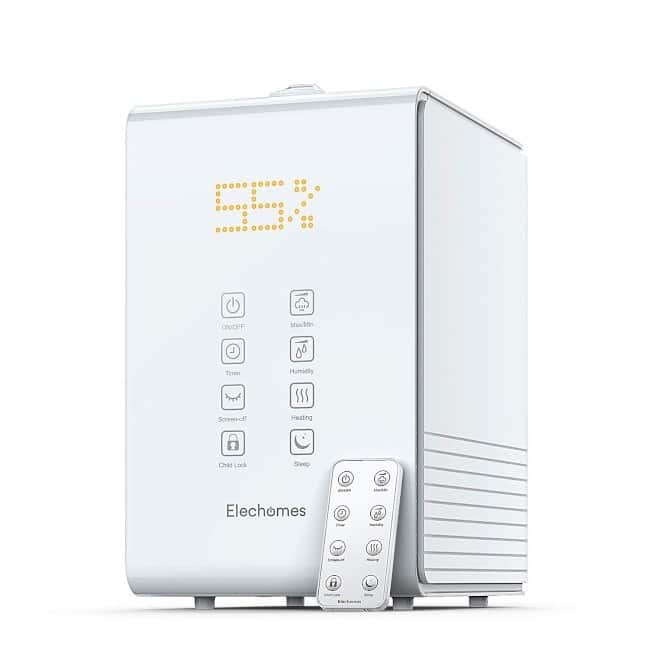
This diffuser comes at a higher price point, but the features are what gives you some serious bang for your buck. This unit has an essential oil compartment for optional aromatherapy along with a whopping 6-liter tank. This compartment allows you to keep the tank clean for longer and even use the unit purely as a humidifier. This unit says that it can diffuse essential oils at a range of approximately 720 square feet.
Below, we answer a few questions that often come up when discussing diffusers. Read on to learn more in-depth information about working with diffusers
How do I properly clean my essential oil diffuser?
It is vitally important to regularly clean your essential oil diffuser for both the health of the diffuser and your health. Oils can cling to the reservoir of most diffusers and be exposed to varying temperature changes, which can encourage bacterial growth over time. The last thing you want to diffuse is bacteria! Failing to clean your diffuser can also lead to clogging and breaking of the diffuser, which is both a pain to deal with and can get expensive!
Let’s avoid all that by making sure that our diffusers are clean! The best way to clean your diffuser should be outlined in your owner’s manual, but there are other methods that you can use if you choose to. Always make sure that you contact the manufacturer to make sure that specific ways of cleaning don’t void your warranty before giving them a try! Another critical thing to note when cleaning an electric diffuser is to make sure that the device is unplugged before beginning the cleaning process.
One option for cleaning an ultrasonic diffuser is to fill it up about halfway with water, then add about ten drops of white vinegar to it. Then, let the diffuser run for about five minutes with this mixture inside of it. Next, drain the diffuser and use a cotton swab soaked in white vinegar to get into the tight corners of the diffuser. Rinse with clean water, then dry with a dry cloth or cotton balls.
If you have a nebulizing diffuser, you can try cleaning it out in a few ways using pure rubbing alcohol. You can add a few drops of rubbing alcohol to the diffuser, run it for about five minutes, then dispense the alcohol. When the unit is dry, then you can start diffusing away!
Are waterless essential oil diffusers effective?
Waterless essential oil diffusers can be effective! As mentioned previously, nebulizing, heat, and aroma diffusers are great waterless essential oil diffusers. Nebulizing diffusers are the most effective type of waterless diffuser, combining concentrated essential oils with airflow to get small particles into bigger spaces. Heat diffusers work, but they are usually just effective for small spaces. Aroma diffusers are also effective for diffusing essential oils but, again, are best used in small areas.
The most prominent essential oil diffuser that we recommended above is a nebulizer and doesn’t require any water to fill large spaces! The drawbacks of these types of diffusers are that they can be pricier and use up your essential oils faster because there is no dilution involved in their use. You can manage this by controlling the intensity of the strength on these machines, though!
You are now prepared to diffuse with confidence! If you’re ready to fill your ample space with essential oils, you can get started with the suggestions we’ve outlined in this post! Happy diffusing!

